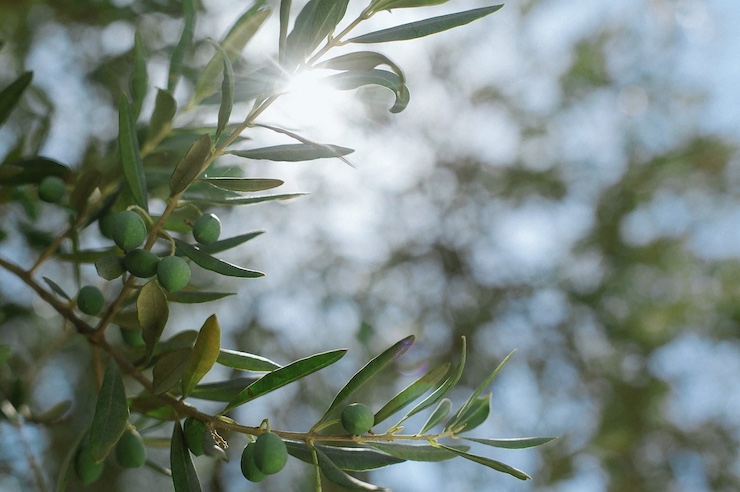
No other nation is more famous for olive oil than Italy. In 2019, Italy produced 336,581 tons of olive oil, a number that has been steadily declining since 2013, when farmers in Southern Italy’s Salento region first discovered their olive trees were under attack. Parasitic insects sucking on the tree’s sap began infecting the trees with Xylella fastidiosa, a bacteria that kills the host tree from the inside out. Photographers Jean-Marc Caimi and Valentina Piccinni spent 6 years documenting the plight of olive grove farmers who have watched their ancestral land devastated by Xylella fastidiosa.
Caimi and Piccinni’s book, titled Fastidiosa, was published in January of 2022. In it, Vito, a 56 year old local farmer said, “I see dark times for the future of the countryside. Imaging [sic] going up a hill or onto the roof of a house, you see everything green with olive groves, millions of olive trees. Now think of the Sierra Madre and the valleys of the grand canyon…There will be nothing left.” Scientists have yet to discover a cure for Xylella fastidiosa. The only known management is to cut down infected trees to prevent the spreading of the bacteria. But it is not just a single tree that needs to be felled. The European Union is requiring farmers to cut down all trees within a 100 meter radius of infected trees, which has led to millions of trees being cut down already.
But Italian olive farmers, with the help of science, are hopeful that their groves can recover. Scientists from all over the world, fearing Xylella fastidiosa can easily spread, are working together to come up with solutions. Donato Boscia, from Italy’s Institute for Sustainable Plant Protection, explained that the best defense is vigilant observations. But as the invasive insects are inside the trees, observing them from the ground isn’t working well enough. In the first ever EU study solely dedicated to Xylella fastidiosa, researchers will begin using drones to survey olive groves.
The drones will be equipped with cameras that have hyperspectral and thermal sensors. The sensors will be able to detect the slightest evidence of infection. For example, minute changes in leaf color, something that even the most experienced farmer would not be able to see with the naked eye. Better yet, the drones are inexpensive and can cover vast areas in record time. Researchers plan to use drones to collect data on 300,000 trees in a short amount of time.
The data collected by the drones will give farmers evidence needed for early management, cutting down trees that are in the beginning stages of infection, slowing the spread, and thus limiting the need to cut down more trees. The drones will also highlight the possibility of healthy trees within infected ones. These strong trees can be further studied for resiliency traits and be used to help produce what farmers and researchers hope will become supertrees that are impervious to the disease. Marie-Agnés Jacques, from France’s National Research Institute for Agriculture, Food and Environment, is one of the many researchers trying to save Italy’s, and the EU’s, olive industry. In a report on the EU Xylella Fastidiosa project, she said that data shows “that good management practices in the field improve the resistance traits of the olive cultivars.” While there is no cure for Xylella fastidiosa, using drones to document and observe olive trees may be the key to preventing the total decimation of Europe’s olive oil industry.
|